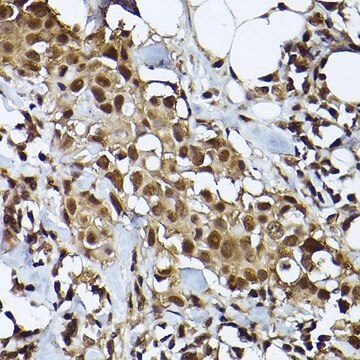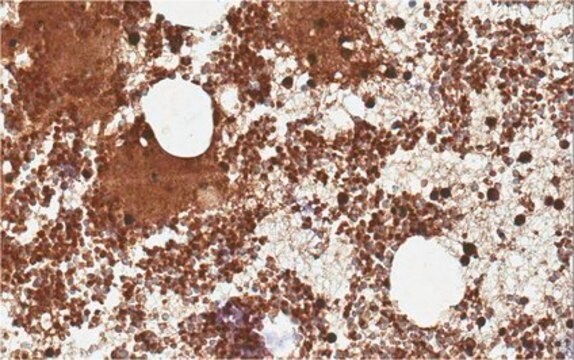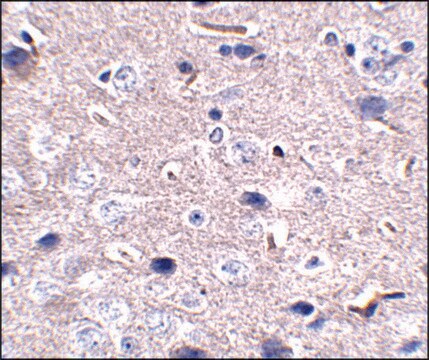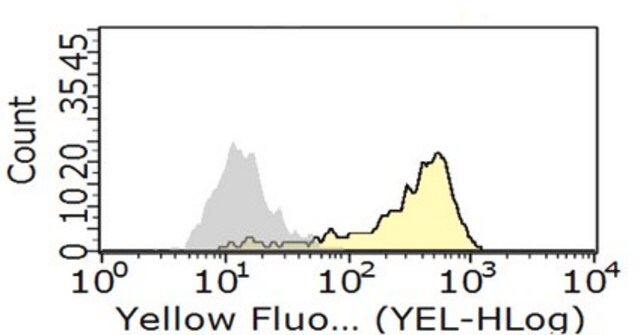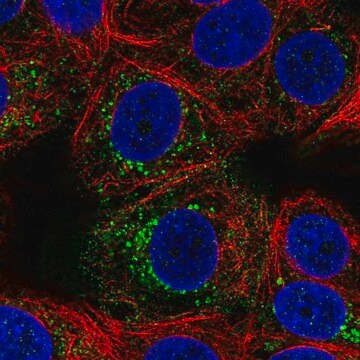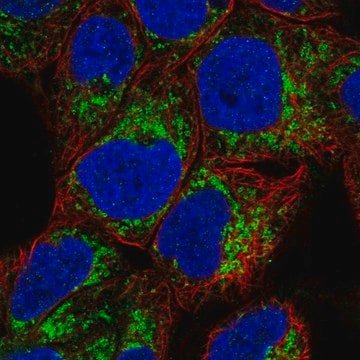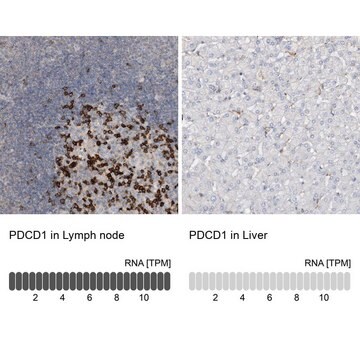MABF842
Anti-FcγRIIb/c Antibody, clone 4F5
clone 4F5, from mouse
Sinônimo(s):
Low affinity immunoglobulin gamma Fc region receptor II-b/c, IgG Fc receptor II-b/-c, CD32, CDw32, Fc-gamma RII-b/-c, Fc-gamma-RIIb/c, FcRII-b/-c
About This Item
Produtos recomendados
fonte biológica
mouse
Nível de qualidade
forma do anticorpo
purified immunoglobulin
tipo de produto de anticorpo
primary antibodies
clone
4F5, monoclonal
reatividade de espécies
human
técnica(s)
flow cytometry: suitable
immunocytochemistry: suitable
immunohistochemistry: suitable (paraffin)
immunoprecipitation (IP): suitable
western blot: suitable
Isotipo
IgG1κ
nº de adesão NCBI
nº de adesão UniProt
Condições de expedição
dry ice
modificação pós-traducional do alvo
unmodified
Informações sobre genes
human ... FCGR2B(2213)
Categorias relacionadas
Descrição geral
Especificidade
Imunogênio
Aplicação
Flow Cytometry Analysis: A representative lot was conjugated with Alexa Fluor™ 647 and detected (at 10 µg/mL) FcγRIIb/c immunoreactivity among the CD19+ B lymphocytes population in human whole blood (Courtesy of Dr. Jeffrey C. Edberg, University of Alabama at Birmingham, USA).
Flow Cytometry Analysis: A representative lot was conjugated with Alexa Fluor 488 and detected FcγRIIb/c immunoreactivity on the surface of EBV-transformed human B cells from various donors (Li, X., et al. (2013). Sci. Transl. Med. 5(216):216ra175).
Flow Cytometry Analysis: A representative lot was conjugated with Alexa Fluor 488 and employed to detect FcγRIIb expression on various human PBMC populations. Highest FcγRIIb level was found on CD19+ B lymphocytes, while lower expression was found among CD14+ monocytes/neutrophils and CD3+ T-cells were negative of FcγRIIb staining (Su, K., et al. (2007). J. Immunol. 178(5):3272-3280).
Flow Cytometry Analysis: Clone 4F5 hybridoma supernatant immunostained murine B lymphoma IIA1.6 cells expressing exogenously transfected human FcγRIIb, but not any of the two polymorphic forms of human FcγRIIa with either Arg131 or His131 (Su, K., et al. (2007). J. Immunol. 178(5):3272-3280).
Immunoprecipitation Analysis: A representative lot immunoprecipitated both FcγRIIb and FcγRIIc from EBV-transformed human B cells and primary human CD19+ cells (Li, X., et al. (2013). Sci. Transl. Med. 5(216):216ra175).
Immunoprecipitation Analysis: A representative lot immunoprecipitated exogenously expressed human FcγRIIb, but not any of two polymorphic forms of human FcγRIIa with either Arg131 or His131 from murine B lymphoma IIA1.6 transfectants expressing the respective human proteins (Su, K., et al. (2007). J. Immunol. 178(5):3272-3280).
Western Blotting Analysis: A representative lot detected exogenously expressed human FcγRIIb, but not any of two polymorphic forms of human FcγRIIa with either Arg131 or His131 in lysates from murine B lymphoma IIA1.6 transfectants (Su, K., et al. (2007). J. Immunol. 178(5):3272-3280).
Immunocytochemistry Analysis: A representative lot was conjugated with Alexa Fluor 488 and detected FcγRIIb/c immunoreactivity on the surface of EBV-transformed human B cells from various donors (Li, X., et al. (2013). Sci. Transl. Med. 5(216):216ra175).
Functional Analysis: Cross-linking by goat anti-mouse IgG (GαM) of clone 4F5 F(ab′)2-bound human FcγRIIb and endogenous surface IgG-BCR on IIA1.6 murine B lymphoma cells expressing transfected human FcγRIIb resulted in a reduced calcium response than that triggered by GαM in the absence of clone 4F5 F(ab′)2. Cross-linking of FcγRIa with clone 4F5 F(ab′)2-bound human FcγRIIb on the surface of U937 cells likewise reduced the calcium response triggered by FcγRIa cross-linking alone (Su, K., et al. (2007). J. Immunol. 178(5):3272-3280).
ELISA Analysis: Clone 4F5 hybridoma supernatant detected recombinant extracellular domain (EC) of human FcγRIIb, but not any of the two polymorphic forms of recombinant human FcγRIIa ECs with either Arg131 or His131 (Su, K., et al. (2007). J. Immunol. 178(5):3272-3280).
Inflammation & Immunology
Immunoglobulins & Immunology
Qualidade
Immunohistochemistry Analysis: A 1:50 dilution of this antibody detected FcγRIIb/c immunoreactivity in Islets of Langerhans in human pancreas tissue sections.
Descrição-alvo
forma física
Armazenamento e estabilidade
Handling Recommendations: Upon receipt and prior to removing the cap, centrifuge the vial and gently mix the solution. Aliquot into microcentrifuge tubes and store at -20°C. Avoid repeated freeze/thaw cycles, which may damage IgG and affect product performance.
Outras notas
Informações legais
Exoneração de responsabilidade
Não está encontrando o produto certo?
Experimente o nosso Ferramenta de seleção de produtos.
Código de classe de armazenamento
12 - Non Combustible Liquids
Classe de risco de água (WGK)
WGK 2
Ponto de fulgor (°F)
Not applicable
Ponto de fulgor (°C)
Not applicable
Certificados de análise (COA)
Busque Certificados de análise (COA) digitando o Número do Lote do produto. Os números de lote e remessa podem ser encontrados no rótulo de um produto após a palavra “Lot” ou “Batch”.
Já possui este produto?
Encontre a documentação dos produtos que você adquiriu recentemente na biblioteca de documentos.
Nossa equipe de cientistas tem experiência em todas as áreas de pesquisa, incluindo Life Sciences, ciência de materiais, síntese química, cromatografia, química analítica e muitas outras.
Entre em contato com a assistência técnica